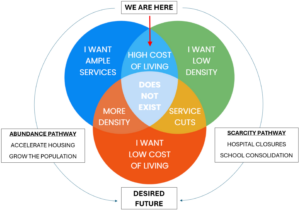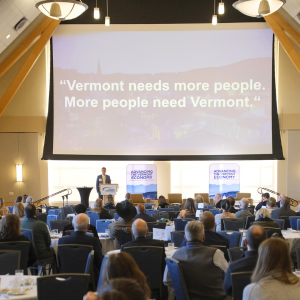In 2021, Governor Phil Scott first established the second week of May as Inclusion Week. Annually, the event recognizes that the State of Vermont condemns discrimination in all forms and welcomes all people who want to live, work, and visit Vermont.
The Vermont Declaration of Inclusion is an ongoing grassroots initiative advancing diversity, equity, and inclusion by working with municipalities to recognize and acknowledge inequities and commit to improving by adopting the Declaration for their community.
As of April 23, 2023, 110 towns and cities, home to 65.8% of Vermont’s population, have adopted the Declaration of Inclusion.
The Vermont Futures Project took a deeper dive into the data to find the following:
- 71.5% – Rutland County leads the way with the highest percentage of municipalities adopting the Declaration within their county. Washington County is second at 70% and Lamoille rounds out the top 3 at 63.6%.
- 67% of population growth – Of the total population growth reported in the Census between 2010 – 2020, two-thirds of it happened in municipalities that support the Declaration.
- 50 over 50 – 50% of counties (7 of 14) have over 50% of their towns and cities adopting the Declaration.
- 66% of housing units – The 50% of counties with over 50% of municipalities that have adopted the Declaration account for about two-thirds of Vermont’s housing stock.
Why It Matters
Vermont is the second oldest and second whitest state in the country. Countless stories have been written about the brain drain phenomenon and the threat of rural decline. About 100,000 Vermonters will reach retirement age in the next decade.
The Declaration of Inclusion says that we want to write a new chapter in Vermont’s story and create the conditions for our state to evolve towards a thriving future for all. It’s an important symbolic action that embraces difference and dispels the zero-sum myth. From economic, environmental, and equity perspectives, creating welcoming and inclusive communities throughout the state is good for Vermont’s future.
Housing is Required for A Place to Feel Like Home
A recent episode of On Point explored why Americans are leaving big cities. Even though 80% of Americans live in urban areas, about half of Americans say they preferred to live in small towns and rural places. The continued evolution and decoupling of home and work is projected to rebalance the distribution of America’s population towards smaller metro and even rural areas.
The places that will benefit from redistribution are the places that are proactively planning for this transition. The past three years have provided sufficient data to demonstrate what increased demand for a limited supply of housing units will do to prices. If demand persists without addressing supply, our communities will experience rural gentrification and the overall population will plateau based simply on housing capacity.
The Power of Saying Yes
The Vermont Futures Project asked a question in the Vermonter Poll last year about growing Vermont’s population to strengthen its workforce. The results were: 49% – Yes, 38% – No, 13% – Unsure.
Let’s consider these responses in a community context along with the Declaration of Inclusion. Municipalities that support population growth and adopt a Declaration of Inclusion will pursue community development strategies that are different than places that don’t prioritize inclusion and don’t support population growth.
Which of these pathways is likely to lead to more houses? Which of these pathways is more likely to lead to more diverse and resilient communities?



